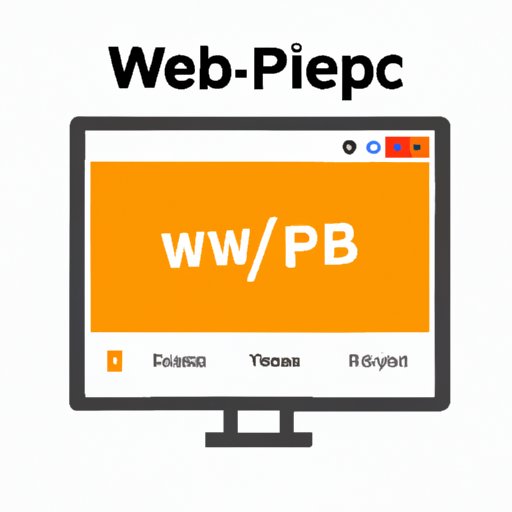Introduction
If you’re a website owner, you’re probably always looking for ways to improve your site’s performance. One way to do that is by using WebP files for your images. In this article, we’ll explore what WebP files are, why they matter for website owners, and how you can start using them to improve your website’s speed and performance.
What Are WebP Files?
WebP is an image format that was developed by Google in 2010. It’s designed to improve image compression without sacrificing image quality. WebP files work by using a combination of predictive coding and variable block sizes to compress images in a way that reduces file size while maintaining image clarity.
One of the main benefits of using WebP files is that they can significantly reduce the file size of your images compared to other formats like JPEG and PNG. This means that your website can load faster, reducing page load times and improving user experience.
Why WebP Files Matter for Website Owners
Website speed is crucial for user experience. Studies show that users are more likely to abandon a website if it takes more than three seconds to load. Plus, website speed is a Google ranking factor, which means that a slow website may not rank as well in search results.
WebP files can help improve website speed by reducing image file size. This means that your website pages will load faster, which can lead to a better user experience and better search engine rankings.
There have been several examples of websites that have seen significant improvements in speed and performance after switching to WebP files. For example, Etsy reported a 40% reduction in image file sizes and a 17% reduction in page load times after switching to WebP files. Similarly, the travel website Wego reported a 45% reduction in image file sizes and a 35% improvement in page load times.
The Pros and Cons of Using WebP Files for Your Web Images
While WebP files offer many benefits, there are also some potential drawbacks to consider. One of the main concerns is browser support and compatibility. While all modern web browsers support WebP files, some older browsers (like Internet Explorer) may not. This means that some users may not be able to see WebP images on your website.
Another potential disadvantage is that some image editors and content management systems may not support WebP files. This means that you may need to use a separate tool or converter to create WebP files, which can add an extra step to your image optimization process.
How to Convert Your Images to WebP Files for Better Website Performance
If you decide to start using WebP files, there are several tools and converters available that can help you convert your images. One popular option is the WebP plugin for Adobe Photoshop, which allows you to save images in the WebP format directly from Photoshop.
There are also several online converters available that allow you to upload images in various formats (like JPEG or PNG) and convert them to WebP files. Some popular options include Squoosh and Convertio.
When converting your images to WebP files, it’s important to pay attention to both image quality and file size. While WebP files offer improved compression, you don’t want to sacrifice image quality in the process. Make sure to test your images on different devices and screens to ensure that they look good across various platforms.
WebP vs. Other Image Formats: Which One Should You Use for Your Website?
If you’re trying to decide between WebP files and other image formats like JPEG or PNG, there are several factors to consider. One of the main factors is image quality. In general, JPEG files are best for photographs and other complex images, while PNG files are better for images with a lot of text or sharp lines.
If you’re looking to reduce file size and improve website speed, WebP files are a good option. However, it’s important to consider browser support and compatibility, as well as the level of support for WebP files in your image editor or content management system.
A Beginner’s Guide to WebP Files for Web Designers and Developers
If you’re a web designer or developer who is new to WebP files, there are several resources and tools available to help you get started. Google offers a WebP gallery that includes sample images and code snippets for using WebP files in your website design.
There are also several WordPress plugins available that allow you to easily add WebP support to your WordPress website. Some popular options include WebP Express and Optimus.
Conclusion
WebP files offer a great way to improve website speed and performance by reducing image file size. While there are some potential downsides to using WebP files (like browser support and compatibility), the benefits are significant. By following best practices for optimizing WebP files and testing your images across different devices and screens, you can start seeing improvements in your website’s speed and user experience.
